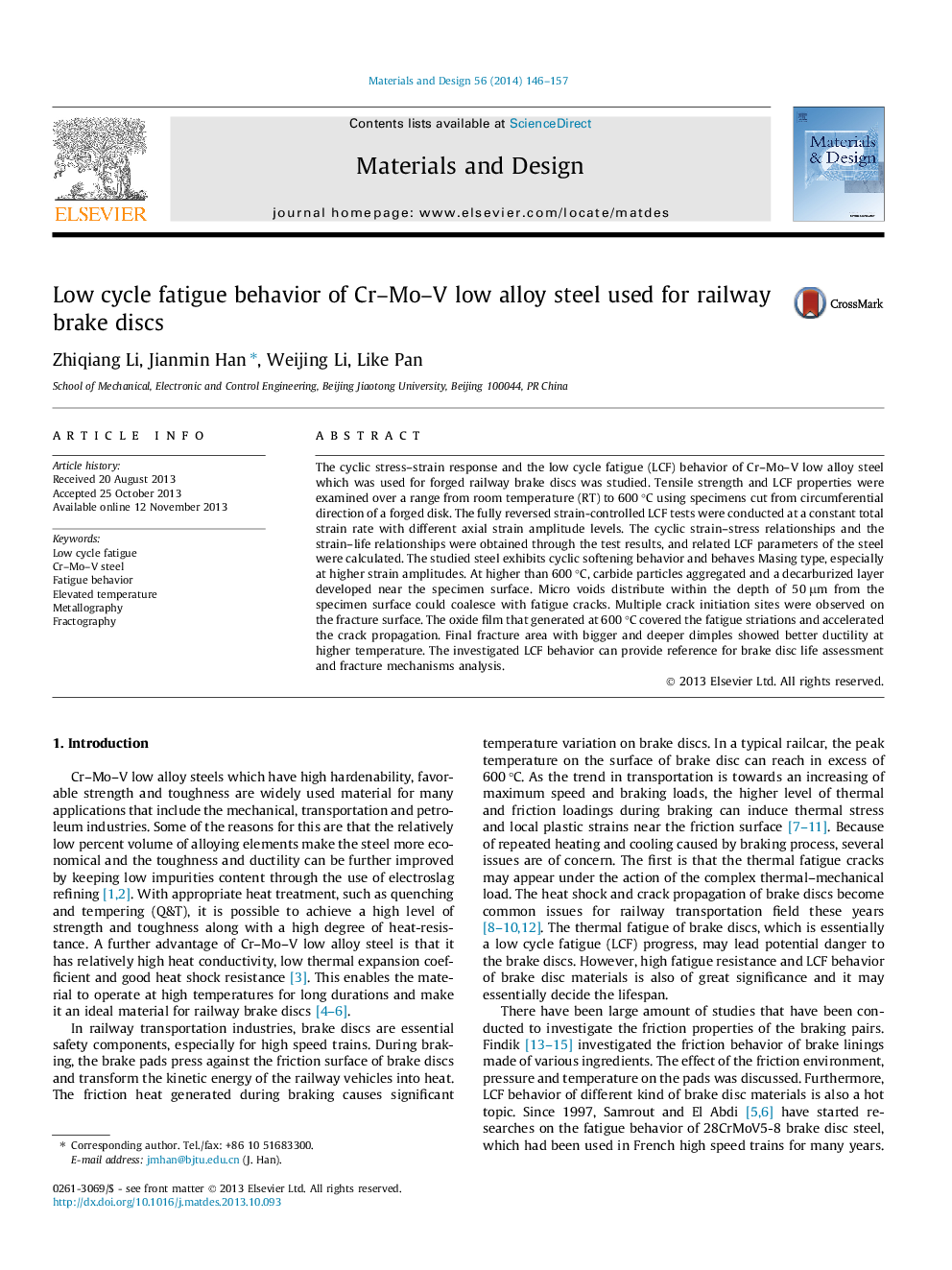| Article ID | Journal | Published Year | Pages | File Type |
|---|---|---|---|---|
| 829423 | Materials & Design (1980-2015) | 2014 | 12 Pages |
•The LCF behavior of a Cr–Mo–V brake disc steel was investigated from RT to 600 °C.•Strain–life relationships of the steel at different temperature were established.•The material exhibited cyclic softening and Masing behavior.•Micro voids were observed around fatigue crack tips and near specimen surface.•Fractographic and metallographic analyses were conducted.
The cyclic stress–strain response and the low cycle fatigue (LCF) behavior of Cr–Mo–V low alloy steel which was used for forged railway brake discs was studied. Tensile strength and LCF properties were examined over a range from room temperature (RT) to 600 °C using specimens cut from circumferential direction of a forged disk. The fully reversed strain-controlled LCF tests were conducted at a constant total strain rate with different axial strain amplitude levels. The cyclic strain–stress relationships and the strain–life relationships were obtained through the test results, and related LCF parameters of the steel were calculated. The studied steel exhibits cyclic softening behavior and behaves Masing type, especially at higher strain amplitudes. At higher than 600 °C, carbide particles aggregated and a decarburized layer developed near the specimen surface. Micro voids distribute within the depth of 50 μm from the specimen surface could coalesce with fatigue cracks. Multiple crack initiation sites were observed on the fracture surface. The oxide film that generated at 600 °C covered the fatigue striations and accelerated the crack propagation. Final fracture area with bigger and deeper dimples showed better ductility at higher temperature. The investigated LCF behavior can provide reference for brake disc life assessment and fracture mechanisms analysis.
